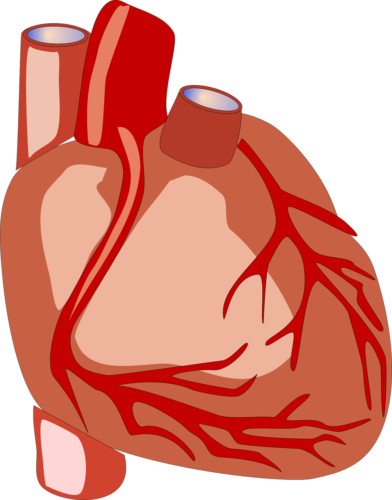The human heart is a muscular organ that pumps blood throughout the body via the circulatory system. It has four chambers: two atria and two ventricles. It is located between the lungs and slightly to the left of the center of the chest.

What is the weight of a human heart?
An adult human heart typically weighs weighs about 10 to 12 ounces (280 to 340 grams) in men and 8 to 10 ounces (230 to 280 grams) in women1.
Frequently Asked Questions about the human heart:
Where is the human heart located?
The human heart is positioned within the chest cavity, slightly tilted towards the left side. It resides between the lungs and finds protection within the ribcage.
How does the heart facilitate blood circulation?
The heart comprises four chambers: two atria and two ventricles. The atria receive blood, while the ventricles pump it out. The right side of the heart receives deoxygenated blood from the body and sends it to the lungs for oxygenation. The left side of the heart receives oxygenated blood from the lungs and propels it to nourish the rest of the body.
How many times does the heart beat in a day?
On average, a healthy adult heart beats approximately 60 to 100 times per minute, resulting in approximately 100,000 beats over the course of a day.
Interesting Facts about the human heart
1. The heart possesses its own electrical system, generating impulses that initiate and regulate its contractions. These electrical signals maintain the heart’s rhythm.
2. The sound of a heartbeat arises from the closing of the heart valves, not from the heart’s actual beating.
3. Each minute, the heart pumps about 5 liters (1.3 gallons) of blood, equivalent to an astounding 7,200 liters (1,900 gallons) per day.
4. The heart is composed of specialized muscle tissue called cardiac muscle, which contracts involuntarily and tirelessly to sustain its continuous pumping action.
5. As one of the most metabolically active organs, the heart demands a constant supply of oxygen and nutrients to fulfill its vital functions.
6. Emotions can impact heart rate and rhythm. Intense emotions such as fear or excitement can accelerate the heart’s beating.
7. Regular aerobic exercise, such as jogging or cycling, can strengthen the heart muscle, enhance circulation, and lower the risk of heart disease.
The human heart stands as an extraordinary organ, tirelessly working to sustain life by delivering essential oxygen and nourishment throughout the body.
Source:
(1) Human heart: Anatomy, function & facts | Live Science. https://www.livescience.com/34655-human-heart.html.
Leave a Reply Cancel reply